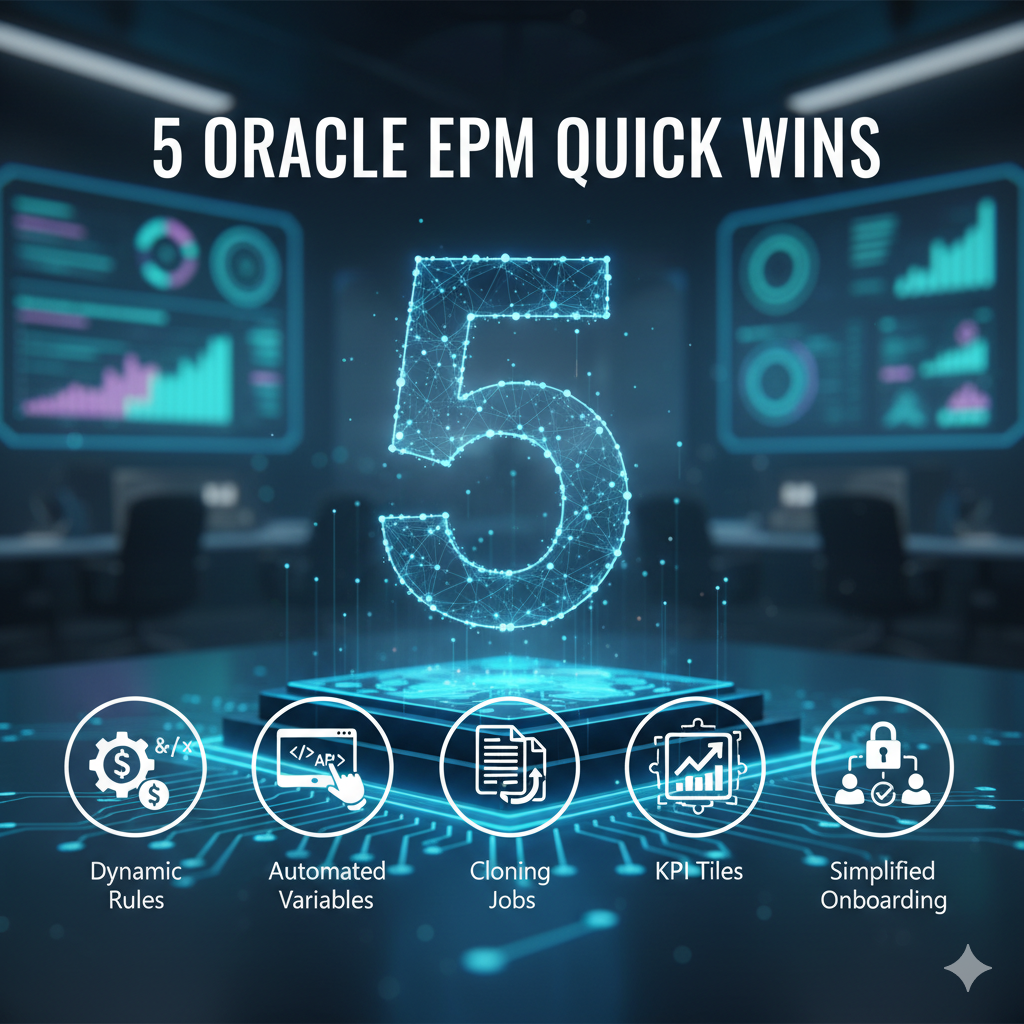Slashing Your Oracle EDM Bill
Nadia Lodroman • 24 August 2025
Listen to Tresora and Ledgeron's chatting about this blog post:
A Guide to Node Counting and Rationalization 💰
Oracle's Enterprise Data Management (EDM) is a best-in-class tool for governing master data, but its subscription cost is directly linked to one key metric: the number of unique managed nodes. To control your budget, you must understand how Oracle counts these nodes and, more importantly, how to rationalise them. The most effective way to do this is by using powerful import features like Node Type Converters
and Node Type Qualifiers
to harmonise your data and eliminate duplicates.
How Oracle Counts Nodes
The licensing model is simple: you pay based on the total number of unique nodes
across all applications in your EDM
instance.
A node
is any individual record or member in a dimension—an account, an entity, a product, etc. The word "unique"
is where the costs can add up. EDM identifies a node by its name as a text string. This means that ACC_4010, 4010, and 4010 (with a space) are seen as three separate, billable nodes, even if they represent the same G/L account.
The problem often starts when you load data from different source systems, each with its own naming conventions. Without a rationalisation strategy, your node count becomes bloated with these superficial variations, leading to unnecessarily high costs.
Using Node Type Converters for Standardisation
Node Type Converters
are your first line of defense. They are transformation rules applied to node properties during the import process, allowing you to clean and standardize data before it ever becomes a managed node in EDM. Think of them as an automated data cleanup crew.
Common use cases for converters include:
- Case Conversion: If your ERP exports sales_us and your planning system uses SALES_US, these are two distinct nodes. By applying an UpperCase or LowerCase converter during import, you transform both into a single, standard format.
- Manipulating Prefixes and Suffixes: This is a huge cost-saver. If one system generates account names like ERP-60100 and your standard is just 60100, you can use a SubString or Replace converter to strip the "ERP-" prefix. This ensures data from multiple sources is harmonized into a single node name.
- Trimming Whitespace: A common data entry error is the inclusion of leading or trailing spaces. The Trim converter automatically removes them, preventing the creation of hard-to-spot duplicates.
Leveraging Node Type Qualifiers for Contextual Uniqueness
Sometimes, nodes have the same name but are unique because of their context or position in a hierarchy. For example, many different departments might have an account called "Miscellaneous Expense."
Without qualifiers, you would need to create artificially unique node names like Sales_Misc_Exp, HR_Misc_Exp, and IT_Misc_Exp, resulting in three billable nodes.
This is where Node Type Qualifiers
come in. A qualifier allows you to define a node's uniqueness based on its relationship to another property, most commonly its parent.
Here's how it works:
- You can keep the node name simply as "Miscellaneous Expense".
- You then designate the Parent Node as the qualifier for the node type.
- Now, EDM understands that "Miscellaneous Expense" under the "Sales" parent is different from "Miscellaneous Expense" under the "HR" parent.
The result? You only have one
unique node named "Miscellaneous Expense" in your system, not three. The uniqueness is handled by its context within the hierarchy, not by creating redundant node names. This is an incredibly powerful feature for rationalising nodes in shared, multi-parent, or ragged hierarchies.
By combining a proactive strategy of standardising names with Node Type Converters
and ensuring contextual uniqueness with Node Type Qualifiers, you can dramatically reduce your node count, maintain a cleaner data environment, and take direct control of your Oracle EDM
costs.
Need an EDM Expert?
Optimising your Oracle EDM
environment requires a deep understanding of its data governance capabilities. If you want to implement a robust rationalisation strategy to control costs and improve data quality, expert guidance can make all the difference.
For specialised consulting on your Oracle EDM and EPM Cloud strategy, contact Nadia Lodroman
at www.lodroman.com.






